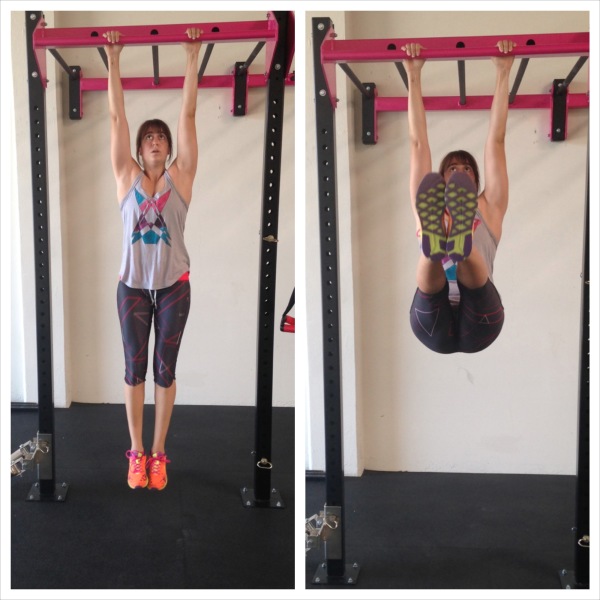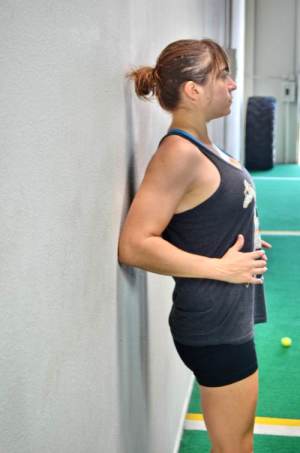WARM UP
Stretch and Roll Out:
Wrists/Forearms
Chest
Shoulders
Traps
Upper Back
ACTIVATION
Complete 2 rounds of the circuit below.
CIRCUIT:
30 second Scapular Wall Hold
30 second Dead Hang
30 second Pull Up and Hold
WORKOUT
Complete 4-5 rounds of the first exercise. Rest up to 1 minute between rounds of the first exercise. Then rest 1-2 minutes before moving on to the supplemental circuit. Complete 4 rounds of the circuit resting up to 1 minute between rounds.
EXERCISE:
Max Pull Ups (See below for variations and tips to get the most out of these rounds)
CIRCUIT:
8-15 reps Pull Overs
8-15 reps Inverted Rows
8-15 reps Hanging Abs
NOTES:
With the Max Pull Ups you want to try to go to failure or even past failure each and every round. If you can only do a few pull ups with a variation, you may want to regress right away and complete a few more to try to increase your work capacity. For instance, if you can do 2 regular pull ups, you may want to try to do 5 more reps, but with a little foot assistance or even a jump to the top and then a slow eccentric down.
Or if you can already easily do a ton of pull ups, you may want to use the Max Pull Up rounds to try more challenging variations such as a really slow eccentric variation instead of just do 40 or 50 pull ups.
The circuit will then be used to target a few common areas to help you build your pull ups further. Use a challenging weight or variation for the circuit exercises. Rest as needed so you can increase weight or at least stay the same each round.
Beginners may want to do slightly higher reps and lower weights than advanced exercisers.
EXERCISE DESCRIPTIONS:
Scapular Wall Hold – For a description of the Scapular Wall Hold and variations, click here!
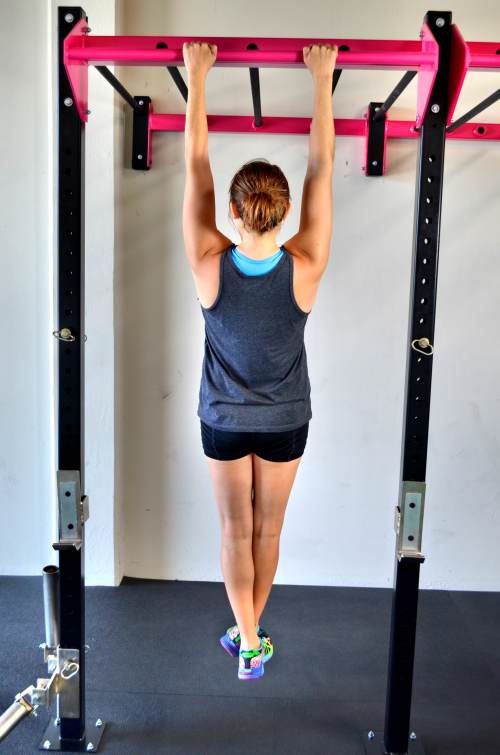
Pull Up and Hold –

Pull Ups – For these pick the hardest variation you can do. Whether you can do full pull ups or need to try a modification like the foot assisted pull ups or jumping pull ups, you want to concentrate on working your back. For Pull Up Variations, click here and see the picture below for a few different options.
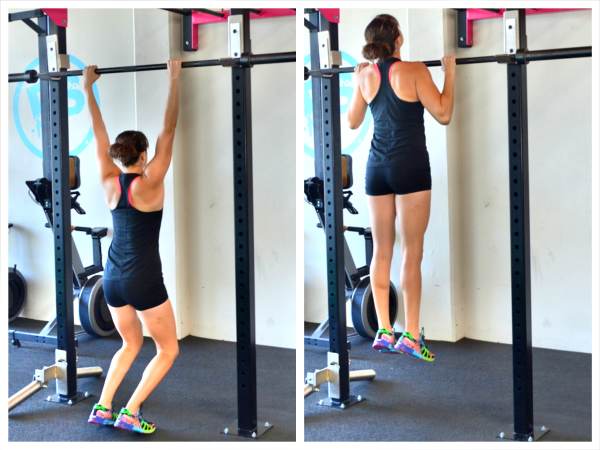

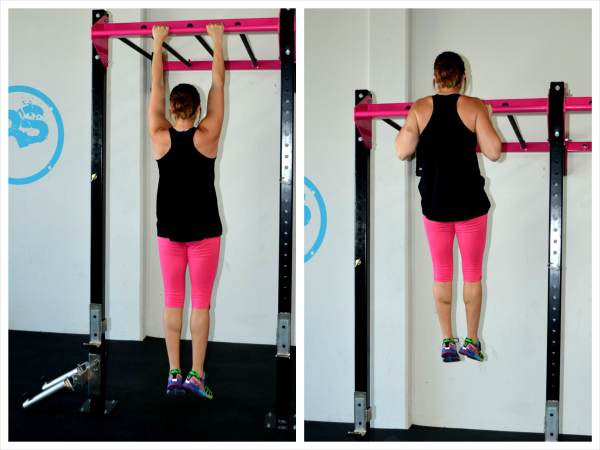
Pull Overs – Place your upper back on a bench or box. Grab a dumbbell in both hands and bridge your hips up. Keeping your arms fairly straight with only a slight bend to the elbow, reach back over your head toward the ground behind you. Reach back as far as you can without bending more at the elbows and then bring the dumbbell back forward over your chest. Keep your hips up the entire time. Really feel your lats and abs stretch and work to control the reach overhead. Then feel your lats and abs work to pull the dumbbell back over your chest. Do not turn this into a tricep exercise. Keep the arms straight and do not start to bend at your elbows. If you can’t reach very far back overhead, you may want to use a lighter weight. Concentrate on feeling your lats work to pull the weight back over. You can also lie fully on the bench; however, that move doesn’t force you to engage your glutes as much. Having to engage your glutes can help protect your low back from hyperextending as you reach back and over.

Inverted Rows – For the Inverted Row and even variations you may want to include, check out this post. You can easily vary this workout by simply doing a different inverted row variations. To do the workout as written, stick with the basic inverted row shown below.
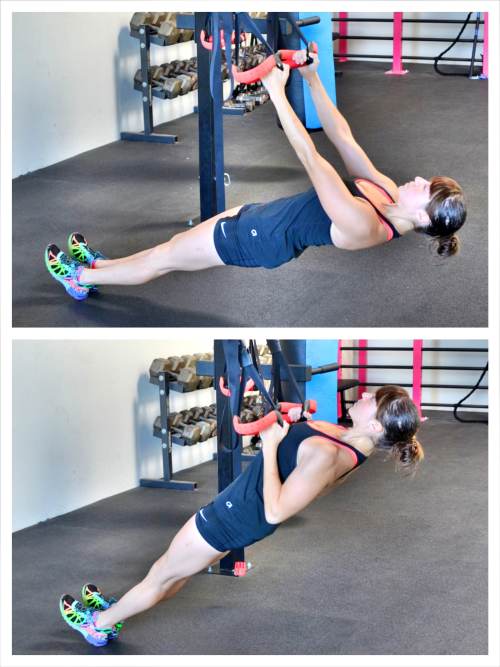
Hanging Abs – For 10 different Hanging Ab variations for every level, check out these 10 options! Beginners may want to start with a pelvic tilt while more advanced exercisers may want to do a knees to elbows or even a straight leg variation to work their lats more.
